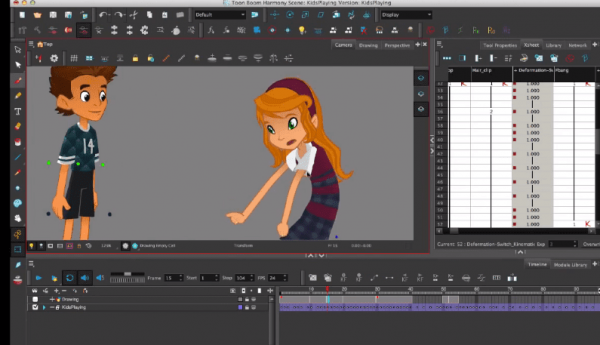
xml file, and import them on a different workstation, allowing you to share your textures between the different people collaborating on your project. You can also export your paper textures into an. Like brush tips and brush presets, paper textures are saved in your preferences. It is recommended to create paper textures in a resolution ranging from 100 x 100 pixels to 400 x 400 pixels. In this tutorial, we will be discussing about Importing Photoshop File along with Layers in Toon Boom Harmony.toonboom toonboomharmony toonboomanimationLe. You can import brush tips in any image format supported by Harmony. About Importing a Multi-Layer PSD It is possible to import Photoshop Document (.

When drawing with a paper texture, its black parts will appear 100% opaque, its white parts will appear 100% transparents, and its grey parts will appear semitransparent. Your texture should also not contain transparency, as Harmony determines the texture's transparency based on its black, white and grey levels. Colors in paper textures are not acknowledged by Harmony, as paper textures are applied onto the colour you are painting with in Harmony. A paper texture must be a greyscale image. To make your own paper texture, you must first create an image file containing the texture, either in Harmony or in a third party software, like Adobe Photoshop, then import it into Harmony. Working files are included, allowing you to follow along with the author throughout the lessons.In the Brush Properties dialog, you will find a set of default paper textures which are bundled with Harmony, but you can also create your own paper textures, then export your collection or import an existing set. Once you have completed this computer based training course, you will have learned how to use the tools available in Toon Boom Harmony to create your own character animations. Finally, you will learn how to export your scene. Other topics that are covered include creating a simple walk cycle, animating a lip sync, adding effects to your animations, and working with the camera.

This video tutorial also covers how to rig a cut-out character, including how to rig the arms and legs, paint the character, adjust the layer hierarchy, and set up a master peg. From there, Tony will teach you how to use the drawing and editing tools in Harmony, as well as work with color, work with the timeline and layers, import files, and animate in Toon Boom Harmony. You will start by learning how to use the interface, then jump into learning how to use the shape tools, including the line tool, rectangle, ellipse, and polyline tool. This course is designed for the absolute beginner, meaning no previous experience with Toon Boom is required.

In this Learning Toon Boom Harmony Essentials training course, expert author Tony Ross will teach you about the tools and techniques available in this powerful animation software.


 0 kommentar(er)
0 kommentar(er)
